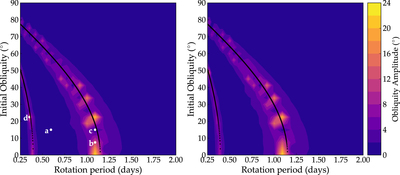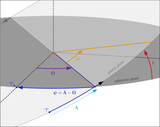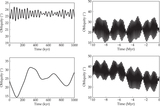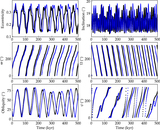Image Details

Caption: Figure 5.
Amplitude of the obliquity oscillation for Kepler-62 f as a function of the initial obliquity and rotation period, for the stable orbital configuration from Bolmont et al. (2015) (our mass set ﹩{ \mathcal A }﹩) with initial ﹩\psi +{\rm{\Omega }}=0^\circ ﹩. The left panel shows the solution from our secular models DISTORB and DISTROT, and the right panel shows the same solution achieved by coupling HNBody to DISTROT. Secular resonances appear at rotation periods ﹩\lesssim 2﹩ days. These are minutely shifted in the N-body solution compared to the secular solution (compare the eigenvalues of Tables 3 and 4), because of the small orbital timescale variations in the semimajor axes of the planets. The secular resonances shown here occur in the proximity of Cassini state 2, for the two eigenvalues s4 and s5. The black curves show the predicted locations of the two Cassini states. The white points correspond to cases shown in Figures 7 and 8.
Copyright and Terms & Conditions
© 2018. The American Astronomical Society. All rights reserved.












